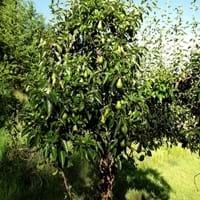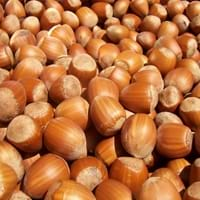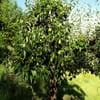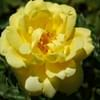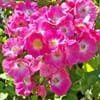Life Span
Perennial
Perennial
Origin
Europe, Western Asia
Europe, Northern Africa, Western Asia
Types
Green Anjou, Red Anjou, Bartlett
Not Available
Number of Varieties
Not Available
Habitat
Humid climates, moist forests
Lower slopes, Moist woods, Slopes
USDA Hardiness Zone
3-8
4-8
Sunset Zone
2a, 2b, 3a, 3b, 4, 5, 6, 7, 8, 9, 14, 15, 16, 17, 18
2a, 2b, 3a, 3b, 4, 5, 6, 7, 8, 9, 14, 15, 16, 17, 18, 19, 20
Habit
Oval or Rounded
Oval or Rounded
Flower Color
White
Yellow
Flower Color Modifier
Not Available
Bicolor
Fruit Color
White, Yellow, Red, Green, Yellow green
Brown
Leaf Color in Spring
Light Pink, Red, Green, Light Green
Green
Leaf Color in Summer
Dark Green
Green, Dark Green
Leaf Color in Fall
Purple, Dark Green, Burgundy
Yellow, Green, Brown
Leaf Color in Winter
Light Green
Not Available
Leaf Shape
Oval with a pointed tip and fine teeth along their edges
Cordate
Plant Season
Early Spring, Winter
Spring, Summer, Fall
Sunlight
Full Sun
Full Sun, Partial Sun
Growth Rate
Medium
Medium
Type of Soil
Loamy, Sandy
Clay, Loam, Sand
The pH of Soil
Acidic
Neutral, Alkaline
Soil Drainage
Well drained
Average
Bloom Time
Fall, Summer
Early Spring, Spring, Late Winter
Tolerances
Drought
Not Available
Where to Plant?
Ground
Ground
How to Plant?
Grafting, Seedlings
Budding, Seedlings
Plant Maintenance
Low
Medium
Watering Requirements
Medium, Water less during winter, Water more in summer, when new, water every week
Do not water frequently, Needs less watering
In Summer
Lots of watering
Lots of watering
In Spring
Moderate
Moderate
In Winter
Average Water
Average Water
Soil pH
Not Available
Neutral, Alkaline
Soil Type
Not Available
Clay, Loam, Sand
Soil Drainage Capacity
Not Available
Average
Sun Exposure
Full Sun, Partial Sun
Full Sun, Partial Sun
Pruning
Remove damaged leaves, Remove dead branches, Remove dead leaves
Remove damaged leaves, Remove dead branches, Remove dead leaves
Fertilizers
Ammonium Nitrate, Fertilize the soil before planting
All-Purpose Liquid Fertilizer
Pests and Diseases
Red blotch
Red blotch
Plant Tolerance
Drought
Drought
Flower Petal Number
Single
Not Available
Foliage Texture
Medium
Coarse
Foliage Sheen
Glossy
Matte
Attracts
Aphids, Birds, Butterflies, Pear psylla
Not Available
Allergy
Anaphylaxis, Digestive Problems, Itchiness, Swelling
Not Available
Aesthetic Uses
Cottage Garden
Not Used For Aesthetic Purpose
Beauty Benefits
Good for skin, Improve skin tone, Making cosmetics, Moisturizing, Skin Problems
Not Available
Environmental Uses
Air purification, Shadow Tree
Air purification
Medicinal Uses
Cancer, Cardiovascular problems, cholesterol-lowering, Detox, Diabetes, Energy, Fiber, Heart problems, High blood pressure, Obesity, Treating diverticulosis, Weight loss
antihelmintic, Astringent, Diaphoretic, Febrifuge, Nutrients, Nutritive
Part of Plant Used
Bark, Fruits, Leaves
Seeds
Other Uses
Used As Food
Basketary, Cosmetics, used for making charcoal
Used As Indoor Plant
No
No
Used As Outdoor Plant
Yes
Yes
Garden Design
Not Available
Edible, Foundation, Fruit / Fruit Tree, Hedges, Mixed Border, Screening / Wind Break
Botanical Name
PYRUS communis
CORYLUS avellana 'Rote Zellernuss'
Common Name
Pear
Common Filbert, Redleaf Filbert
In German
Birne
Haselnuss
In Greek
Αχλάδι
φουντούκι
In Polish
Gruszka
leszczyna
Phylum
Vascular plant
Tracheophyta
Class
Magnoliopsida
Magnoliopsida
Family
Rosaceae
Betulaceae
Clade
Angiosperms, Eudicots, Rosids
Angiosperms, Eudicots, Rosids
Tribe
Maleae
Not Available
Subfamily
Amygdaloideae
Not Available
Number of Species
Not Available
Importance of Pear and Filbert
Want to have the most appropriate plant for your garden? You might want to know the importance of Pear and Filbert. Basically, these two plants vary in many aspects. Compare Pear and Filbert as they differ in many characteristics such as their life, care, benefits, facts, etc. Every gardener must at least have the slightest clue about the plants he wants to plant in his garden. Compare their benefits, which differ in many ways like facts and uses. The medicinal use of Pear is Cancer, Cardiovascular problems, cholesterol-lowering, Detox, Diabetes, Energy, Fiber, Heart problems, High blood pressure, Obesity, Treating diverticulosis and Weight loss whereas of Filbert is antihelmintic, Astringent, Diaphoretic, Febrifuge, Nutrients and Nutritive. Pear has beauty benefits as follows: Good for skin, Improve skin tone, Making cosmetics, Moisturizing and Skin Problems while Filbert has beauty benefits as follows: Good for skin, Improve skin tone, Making cosmetics, Moisturizing and Skin Problems.
Compare Facts of Pear vs Filbert
How to choose the best garden plant for your garden depending upon its facts? Here garden plant comparison will help you to solve this query. Compare the facts of Pear vs Filbert and know which one to choose. As garden plants have benefits and other uses, allergy is also a major drawback of plants for some people. Allergic reactions of Pear are Anaphylaxis, Digestive Problems, Itchiness and Swelling whereas of Filbert have Not Available respectively. Having a fruit bearing plant in your garden can be a plus point of your garden. Pear has showy fruits and Filbert has no showy fruits. Also Pear is flowering and Filbert is not flowering . You can compare Pear and Filbert facts and facts of other plants too.
